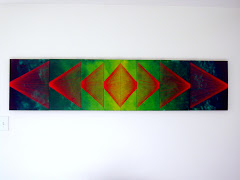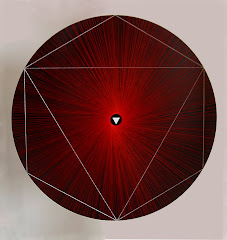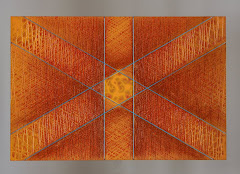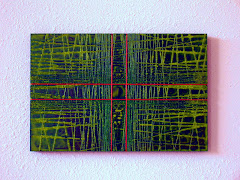I like science. I don't always get it completely, but there is one thing I get - when you travel way out there to the far reaches of science, whether quantum physics or astrophysics or anything in between, it gets very woo woo. I mean very, very woo woo. I like woo woo.
So lets start with light. Very basic thing, light, but what the hell is it? Have you ever really asked yourself that question? Scientists have, and they've been asking it for a long time, and they're still arguing about it, which is kinda good and kinda unnerving at the same time. Back in 1803 a guy named Thomas Young devised a simple experiment to get at the problem of what the hell light is. He cut a slit in a piece of paper and shined a light through it onto another piece of paper a few inches behind it. The light striking the back piece of paper formed a kind of fuzzy round image. He then cut a second slit in the front piece close to the first slit, and shined the same light through the two slits. This time the light on the back piece formed a pattern of alternating dark and light slits, brighter and darker in the middle and gradually losing intensity at the edges. What did this tell him? It told him light was a wave.
To wrap your brain around this, think of yourself as a kid, camping out in the mountains next to a lake with your family. You and your sibling get up early one morning but your parents are still sleeping because they got carried away drinking that expensive wine they brought along, and they're on vacation and don't give a damn when they wake up, and being adults they're clueless anyway. So breakfast will have to wait and the two of you decide to take a hike around the lake. It's a very calm morning and the lake is glassy smooth, perfectly calm. What's the first thing the two of you want to do standing at the edge of that peaceful, calm lake? You wanna throw a rock in it and make waves. Why? BECAUSE THAT'S WHAT KIDS DO, THEY MAKE WAVES! So you both throw a rock, each trying to outdistance the other. And it's very cool when the rocks hit the surface a few yards apart and start two circles of radiating waves on the otherwise peaceful, calm lake. As you watch you notice something about waves -there are alternating high points and low points that are moving along the lake, the high points being higher than the surface and the low points being lower (later in high school physics class you find out, if you were paying attention, that these are called crests and troughs) . This is very pretty and mesmerizing, until the two bands of radiating waves collide and a strange thing happens -when a crest meets a crest, it leaps up higher, when a trough meets a trough it dives down lower, and when a crest meets a trough it's just flat. Wow, very cool!
The name of this phenomenon is wave interference, and waves of all kinds do it when they cross. Now, in Young's slit experiment, the bands of light are just like the colliding waves on that bucolic lake of your youth. When the light went through the two slits, the slits bent the light just a bit so that the waves of light crossed each other. Where two crests crossed, they formed a bright band of light, where two troughs crossed they formed another band of bright light, and where a crest crossed a trough they neutralized each other and formed a dark band. This is what water does. This is what light does. Therefore, light must be a wave.
This may not seem like such a big deal to us in the 21st century, but is was a big deal in 1803, and for the next hundred years or so this was the way science thought about light, as a wave. Until a young dude named Einstein showed up on the scene.
To be continued...
This is the beginning of a process, a becoming. My thoughts, feelings, sensations - long held close - now to slowly unfold like the petals of a flower, a lotus flower if you will. The lotus flower rises up from the mud of the murkiest pond, its roots deep in the muck as its petals open, floating on the surface, catching the waves of energy from our sun. From cold deep-dark moisture to warm, airy light - one continuous slow surge of being... becoming.
But enough of poetic musings! The chase is on!
But enough of poetic musings! The chase is on!
About Me
- Jeff Richards
- Denver, CO, United States
- Visual artist living and creating in Denver, Colorado.
Exhibitions
- Solo Exhibition - Sangre de Cristo Art Center Pueblo, Co 8/3/13 - 10/26/13
Followers
Blog Archive
-
▼
2009
(18)
-
▼
February
(7)
- Emanuel Swedenborg - Part I : Enlightenment Era Ma...
- Emanuel Swedenborg - Part II : Madness, or Rude Aw...
- Emanuel Swedenborg - Part III: Vision or Hallucina...
- Woo Woo part 1 : Waving Particles, Probably Like M...
- Woo Woo part 2 : Particles Waving...again, and aga...
- Woo Woo part 3 : Timely Waving Particles
- Woo Woo part 4 : Why Why Woo Woo?
-
▼
February
(7)
"Without Haste, Without Rest"





.jpg)